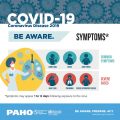Norovirus, often referred to as the “stomach flu” or “winter vomiting bug,” is a highly contagious virus that can lead to gastrointestinal distress and symptoms such as vomiting, diarrhea, and stomach cramps. While norovirus infections are typically short-lived, they can be extremely unpleasant and disruptive to daily life. Understanding the duration of a norovirus infection, its symptoms, and prevention measures is crucial for managing this common illness effectively.
In this article, we will delve into the world of norovirus, exploring its symptoms, transmission, and the crucial question: how long does norovirus last? We will also discuss preventive measures and the best practices for managing norovirus outbreaks.
What is Norovirus?
Norovirus is a contagious virus that primarily affects the stomach and intestines, causing acute gastroenteritis. It is one of the most common causes of viral gastroenteritis worldwide. Norovirus infections are often characterized by symptoms such as nausea, vomiting, diarrhea, stomach cramps, and low-grade fever. The virus can be found in various environments, including food, water, and surfaces, and can easily spread from person to person.
Symptoms of Norovirus Infection
Understanding the symptoms of norovirus infection is essential for early identification and treatment. Here are the key symptoms associated with norovirus:
- Nausea: Norovirus infections often begin with a feeling of nausea, which can range from mild to severe. Nausea is usually followed by other symptoms within 12 to 48 hours of exposure to the virus.
- Vomiting: Vomiting is one of the hallmark symptoms of norovirus infection. It can be sudden and severe, sometimes occurring without warning. Vomiting can be repetitive and may persist for 1-3 days in some cases.
- Diarrhea: Diarrhea is another common symptom. It is usually watery and frequent, often accompanied by stomach cramps and discomfort.
- Stomach Cramps: Norovirus can cause abdominal pain and cramping. These can range from mild discomfort to severe, cramp-like pains.
- Low-Grade Fever: Some people may experience a mild fever, usually below 100°F (37.8°C). Fever is not always present and tends to be low-grade in norovirus infections.
- Headache: Headaches can also occur in some cases, often as a result of dehydration or general discomfort.
- Muscle Aches: Muscle aches and fatigue can be present but are generally less common and less severe than gastrointestinal symptoms.
- Dehydration: Dehydration is a significant concern during a norovirus infection, particularly if vomiting and diarrhea are severe and prolonged. Symptoms of dehydration include dry mouth, reduced urine output, and dizziness.
It’s important to note that the severity and duration of these symptoms can vary from person to person. While some individuals may recover within a day or two, others may experience symptoms for a longer period.
How Long Does Norovirus Last?
The duration of a norovirus infection can vary widely. On average, most people experience symptoms for 1-3 days. However, there are several factors that can influence the duration of the infection:
- Individual Immune System: A person’s immune system plays a significant role in how long the infection lasts. Those with strong immune systems may recover more quickly.
- Age: Children and the elderly are more susceptible to severe norovirus infections and may experience symptoms for a longer time.
- Viral Load: The amount of virus a person is exposed to can affect the duration of the illness. Higher viral loads can lead to more severe and prolonged symptoms.
- Hydration: Staying hydrated is crucial in managing norovirus infections. Those who become dehydrated may experience symptoms for a longer time.
- Underlying Health Conditions: People with underlying health conditions, such as diabetes or compromised immune systems, may experience longer-lasting symptoms.
- Treatment and Self-Care: Proper treatment and self-care measures can help shorten the duration of the illness. This includes rehydration, rest, and maintaining good hygiene practices.
In most cases, the worst of the symptoms, such as severe vomiting and diarrhea, subside within 1-3 days. After this period, people often start to feel better, but it can take a few more days to fully recover. It’s important to avoid close contact with others during this time to prevent the further spread of the virus.
Duration of Immunity
The duration of immunity to norovirus gastroenteritis typically lasts for between 6 months to 2 years. This range reflects the typical timeframe during which individuals who have previously been infected with norovirus might have some level of protection against reinfection. However, it’s important to note that the duration of immunity to norovirus can vary significantly among individuals and may be influenced by various factors, including the specific strain of the virus, the person’s age, and their overall health and immune system strength. Ongoing research aims to better understand the complexities of norovirus immunity and its longevity, as it plays a crucial role in shaping public health strategies for preventing and managing outbreaks of this common and highly transmissible viral illness.
Transmission of Norovirus
Norovirus is highly contagious and can spread easily from person to person. Understanding how it is transmitted is crucial in preventing its spread. Norovirus can be transmitted through various means:
- Direct Person-to-Person Contact: Close contact with an infected person, such as caring for them, sharing food or utensils, or physical contact, can lead to transmission.
- Contaminated Food and Water: Consuming food or beverages contaminated with norovirus is a common source of infection. This can occur at home, in restaurants, or during food handling and preparation.
- Contaminated Surfaces: Norovirus can survive on surfaces for extended periods. Touching contaminated surfaces and then touching the face, mouth, or food can lead to infection.
- Aerosolized Particles: Norovirus can become aerosolized when an infected person vomits. This can lead to viral particles being inhaled by others, potentially causing infection.
- Shellfish: Shellfish, particularly oysters, can concentrate norovirus if harvested from contaminated waters, leading to infection if consumed raw or undercooked.
- Fecal-Oral Route: Norovirus can be transmitted through contact with fecal matter, often in settings with poor sanitation and hygiene.
Because of its highly contagious nature, norovirus can lead to outbreaks in closed or crowded settings, such as schools, cruise ships, and healthcare facilities. Strict hygiene measures, including handwashing and surface disinfection, are essential to prevent transmission.
Preventing Norovirus Infections
Prevention is crucial when it comes to norovirus, as it is much easier to avoid infection than to deal with the unpleasant symptoms. Here are some key measures to prevent norovirus infections:
- Frequent Handwashing: Proper hand hygiene is the most effective way to prevent norovirus transmission. Wash hands with soap and water for at least 20 seconds, especially after using the restroom and before eating or handling food.
- Disinfect Surfaces: Regularly clean and disinfect commonly touched surfaces, such as doorknobs, countertops, and bathroom fixtures, with an appropriate disinfectant.
- Food Safety: Practice good food handling and safety measures. Cook seafood, especially shellfish, thoroughly. Avoid preparing food for others if you are experiencing norovirus symptoms.
- Isolation: If you or someone in your household is infected, isolate the person to prevent further transmission. Avoid close contact with others until symptoms subside.
- Stay Hydrated: If you have norovirus, focus on rehydration. Drink clear fluids such as water, oral rehydration solutions, and clear broths to prevent dehydration.
- Personal Hygiene: Avoid touching your face and mouth, and do not share personal items like towels and utensils with infected individuals.
- Healthcare Facilities: In healthcare settings, strict infection control practices are essential to prevent norovirus outbreaks.
- Vaccination: While there is no specific vaccine for norovirus, some research is ongoing to develop preventive measures.
It’s worth noting that norovirus can still be transmitted even after symptoms have subsided, so continuing with these preventive measures is important to avoid infecting others.
Treating Norovirus Infections
There is no specific antiviral medication to treat norovirus. The main focus of treatment is managing symptoms and preventing complications, such as dehydration. Here are some strategies for treating norovirus:
- Rehydration: Stay well-hydrated by drinking clear fluids, such as water, oral rehydration solutions, and clear broths. Electrolyte solutions can help replace lost electrolytes.
- Rest: Get plenty of rest to allow your body to recover and heal.
- Avoid Medications: Over-the-counter anti-diarrheal medications should be avoided, as they can prolong the infection. Instead, let the virus run its course.
- Isolation: If you are infected, it’s essential to isolate yourself to prevent transmission to others until you are symptom-free for at least 48 hours.
- Consult a Healthcare Provider: If symptoms are severe, or if you are at risk of complications due to age or underlying health conditions, consult a healthcare provider.
Complications and Risks
In most cases, norovirus infections are self-limiting and resolve without complications. However, there are some risks associated with severe infections, particularly in vulnerable populations:
- Dehydration: Dehydration is the most common complication of norovirus, especially in children, the elderly, and those with weakened immune systems. Severe dehydration can lead to hospitalization and the need for intravenous (IV) fluids.
- Secondary Infections: Weakened immune systems can make individuals more susceptible to secondary infections.
- Longer Recovery: In some cases, norovirus symptoms may persist for an extended period, causing discomfort and hindering daily activities.
- Spread to Others: Infected individuals can transmit norovirus to others even after their own symptoms have subsided, which is why good hygiene practices are crucial.
Norovirus and Public Health
Norovirus is a significant public health concern due to its highly contagious nature and potential for causing outbreaks, particularly in enclosed settings. Public health authorities actively monitor and investigate norovirus outbreaks to prevent their spread and identify the sources of contamination.
Community education and awareness are key components of public health efforts to reduce norovirus transmission. Health organizations provide information on prevention and proper hygiene practices to limit the impact of this virus on the community.
Conclusion
Norovirus, while typically a short-lived illness, can be extremely unpleasant and disruptive. Understanding its symptoms, transmission, and prevention measures is essential for managing norovirus effectively. By practicing good hygiene, proper food handling, and isolating infected individuals, you can reduce the risk of norovirus transmission. Remember that staying hydrated is crucial for recovery, and if you or someone you know experiences severe symptoms or is in a high-risk category, it’s important to seek medical attention promptly. Public health efforts are ongoing to better understand and control norovirus, but individual vigilance and responsible actions are key to preventing its spread and ensuring a swift recovery.





